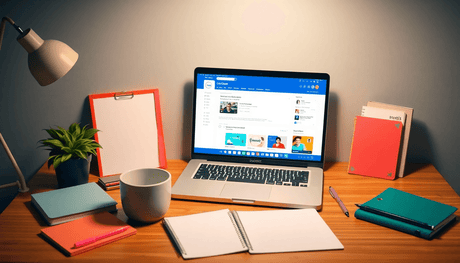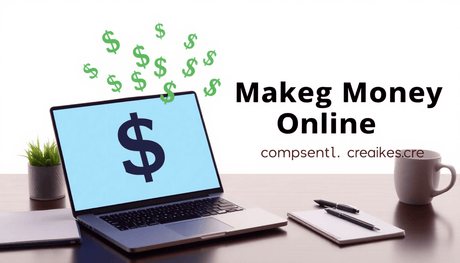Introduction
Private Label Rights (PLR) content refers to material that you can purchase and customize as your own. This includes articles, eBooks, videos, and courses. Entrepreneurs leverage PLR for several reasons:
- Time-saving: Quickly access ready-made content.
- Flexibility: Customize content to align with personal branding.
The focus of this blog is to explore success stories of entrepreneurs monetizing PLR content. These case studies illustrate the diverse ways individuals have harnessed PLR for their business growth. By examining these real-life examples, you will gain insights into effective strategies that make a significant impact on entrepreneurial success.
For instance, some entrepreneurs have utilized PLR content to create online courses such as the Ultimate Auditing and Assurance course, or a JAVA Coding Language for beginners. Others have leveraged PLR in niche areas like SmartPhone Photography, enabling them to monetize their expertise effectively.
Additionally, the flexibility of PLR content allows entrepreneurs to customize it according to their needs. For example, one could use PLR material to develop a comprehensive introduction to using Git course, providing immense value to learners while also generating revenue.
Discover how leveraging PLR can transform your business ventures and enhance your revenue streams.
Understanding PLR Content
Private Label Rights (PLR) content comes in various forms, each serving distinct purposes for entrepreneurs. Common types of PLR content include:
- Articles: Ready-made written pieces that can be edited and branded.
- eBooks: Comprehensive guides or books that can be customized and sold under your name.
- Videos: Engaging visual content that can be used for online courses or marketing campaigns. These PLR video courses are particularly valuable as they allow you to buy licenses, sell them on your website, and keep all of your earnings for life.
- Courses: Structured learning experiences designed for reselling or personal use.
The benefits of using PLR are substantial. Key advantages include:
- Time-saving: Entrepreneurs can bypass the lengthy content creation process, allowing them to focus on marketing and sales.
- Flexibility in customization: PLR content provides a foundation that you can modify to fit your brand's voice and audience preferences. This adaptability makes it easier to create unique offerings.
Utilizing PLR effectively enables you to expand your product range without the extensive investment of time and resources typically associated with original content creation. Embracing PLR, such as PLR courses, allows you to scale your business while providing valuable resources to your customers. Moreover, understanding the difference between PLR & MRR licenses can further enhance your business strategy by leveraging these rights effectively.
Case Study 1: Uthena and Whitelabel Courses
Uthena specializes in providing high-quality whitelabel courses tailored for entrepreneurs, educators, and content creators. Their offerings include a diverse range of video courses that cover various topics, making it easy for users to find content relevant to their niche.
Key Features of Uthena's Offerings:
- Professional-Grade Content: Access to ready-made courses developed by industry experts.
- Flexibility in Customization: Entrepreneurs can modify course materials to align with their brand voice and target audience.
- Reselling Opportunities: Uthena allows users to resell courses under their own branding, creating an additional revenue stream.
Reselling and Customizing Courses
Entrepreneurs can leverage Uthena’s platform to resell and customize courses effectively. This process involves:
- Selecting a Course: Choose from a catalog of topics that resonate with your audience. For instance, one could opt for the Microsoft Excel Pro Beginner course, which offers professional-grade content on Excel.
- Branding the Course: Integrate personal branding elements such as logos, colors, and messaging.
- Marketing the Offering: Utilize various marketing strategies such as social media promotion or email campaigns to reach potential customers.
Additionally, Uthena provides an opportunity for entrepreneurs to sell video courses without filming any, significantly reducing the time and effort required to create content from scratch.
By tapping into Uthena's resources, entrepreneurs not only save time but also gain access to valuable educational material that can enhance their business offerings. Whether it's web development tools or mastering Google Apps Script IDE, Uthena has a wide array of resources that cater to various learning needs.
Furthermore, with the rise of SMS marketing in the digital landscape, entrepreneurs can also explore ways to maximize profits through SMS reseller businesses. This strategy could serve as an additional revenue stream while promoting their whitelabel courses effectively.
Key Strategies Employed in Uthena's Case Study
Successful entrepreneurs utilize several personalization strategies to enhance the value of courses sourced from Uthena. These strategies include:
1. Tailoring Course Content
Entrepreneurs customize existing PLR materials to better suit their audience. This may involve adding unique insights, case studies, or examples that resonate with specific learner demographics. For instance, a course like the CSS Quick Start Course for Beginners can be tailored with additional resources that align with the audience's knowledge level.
2. Branding Integration
Incorporating personal branding elements into the course content creates a sense of ownership and authenticity. This can be achieved by using personalized logos, color schemes, and language that reflects the entrepreneur's brand voice.
3. Audience Alignment
Understanding the needs of the target audience is essential. Successful entrepreneurs conduct market research to identify pain points and interests, ensuring that their customized courses address relevant topics that provide real value. For example, a course on successful meditation could be tailored to meet the specific stress management needs of a corporate audience.
4. Interactive Elements
Adding interactive components such as quizzes, assignments, or discussion forums not only engages learners but also enhances the learning experience. These elements encourage participation and retention of course material.
By focusing on these strategies, entrepreneurs effectively transform generic PLR courses into unique offerings that stand out in a competitive marketplace. The emphasis on course customization and alignment with audience needs plays a critical role in driving success within this framework. Furthermore, Uthena provides a platform for entrepreneurs to submit new courses such as the Essential TEFL Survival Guide, which can be customized and branded according to individual preferences.
Case Study 2: Building an Email List Using PLR Articles
A notable example of leveraging PLR articles for email marketing comes from Sarah, an entrepreneur in the health and wellness niche. She utilized PLR articles as incentives for potential customers to sign up for her email list. By offering a free eBook compiled from high-quality PLR articles, she effectively attracted new leads and engaged her audience.
Key Benefits of Using PLR Content for Email List Building
- Lead Generation: Providing valuable content through PLR articles helps capture interest and encourages sign-ups.
- Cost-Effective: Instead of creating original content from scratch, entrepreneurs can save time and resources by customizing existing PLR material.
- Niche Targeting: Tailoring PLR content to specific audience interests enhances relevance, leading to higher conversion rates.
Sarah's strategy not only increased her email subscriber base but also positioned her as a credible source in her field. The ability to consistently deliver quality content fosters trust and engagement with subscribers, paving the way for future marketing opportunities. By integrating personalized touches into the PLR articles, entrepreneurs can build strong connections with their audience while optimizing their email marketing efforts.
Techniques for Effective Implementation in Email Marketing Case Study
Utilizing PLR articles as free bonuses can significantly enhance your email marketing strategy. Here are some effective tactics to consider:
1. Offer as Lead Magnets
Use PLR articles as lead magnets to entice potential subscribers. Present high-value, niche-specific content that addresses their pain points, encouraging them to sign up.
2. Bundle Content
Create bundles of related PLR articles and offer them as exclusive bonuses for email sign-ups. This approach provides added value and positions you as a knowledgeable resource.
3. Segment Your Audience
Tailor your PLR bonuses to different segments of your email list. By aligning content with specific interests or needs, you increase relevance and engagement.
To boost user engagement, focus on these strategies:
- Interactive Content Sharing: Share snippets or excerpts from PLR articles in your emails, inviting readers to engage by asking questions or prompting discussions.
- Personalized Follow-ups: After sharing PLR bonuses, follow up with personalized emails that encourage feedback. This interaction fosters a sense of community and increases subscriber loyalty.
Implementing these strategies can transform your email marketing efforts, attracting subscribers and building lasting relationships through valuable content sharing.
Case Study 3: Transforming PLR into Online Courses and Workshops
An inspiring example of leveraging PLR materials for online education comes from an entrepreneur who successfully created a comprehensive course utilizing high-quality PLR video content. This individual recognized the potential of PLR as a foundation for a unique learning experience tailored to their audience.
Steps Taken for Tailoring Content
-
Identifying Target Audience: Understanding the specific needs and preferences of learners was crucial. The entrepreneur conducted surveys and engaged with potential students to gather insights.
-
Customizing Course Curriculum: PLR materials served as the base, but significant modifications were made:
- Adding personal anecdotes to foster connection
- Incorporating interactive elements, such as quizzes and discussion forums
- Leveraging high-quality PLR video courses that could be easily integrated into the online platform
-
Branding: The entrepreneur focused on creating a cohesive brand identity throughout the course. This included designing custom graphics, branding the course platform, and ensuring that all content reflected their unique voice.
-
Marketing Strategy: A targeted marketing plan was developed, using social media campaigns and email newsletters to attract interest in the course offering.
By following these steps, this entrepreneur not only created a successful online course but also established a membership site that continues to generate income through ongoing engagement and additional workshops. The combination of PLR content with personalized touches enables entrepreneurs to provide value while monetizing effectively.
Furthermore, this approach isn't limited to just one type of course. For instance, one could explore creating a freelancing course that teaches individuals how to earn from platforms like YouTube, WordPress, Upwork, and Fiverr starting from $0. Alternatively, an advanced Python programming course or even a cryptocurrency mining course could also be developed using similar strategies with PLR content.
Personalization and Branding Approaches in Course Creation Case Study
Creating an effective online course using PLR materials requires more than just content repurposing. Integrating personal branding into PLR customization is crucial. Establishing a unique voice helps differentiate your course from others, fostering a genuine connection with your audience.
Key Techniques for Personal Branding
- Tailor Content: Modify the PLR content to reflect your style and insights. Infusing your personality makes the material relatable and engaging.
- Add Personal Stories: Share anecdotes or examples from your experience that align with the course topics. This enhances credibility establishment and builds trust with learners.
- Visual Branding: Incorporate branded elements such as logos, color schemes, and fonts within course materials. Consistent visual identity reinforces brand recognition.
Enhancing Credibility with Personalized Content
- Expertise Showcase: Include case studies or success stories relevant to your niche. This positions you as an authority in your field.
- Interactive Elements: Engage users through quizzes, feedback forms, or discussion prompts that reflect your values and knowledge.
By adopting these strategies, you not only elevate the quality of your courses but also create a memorable learning experience that resonates with your audience.
However, it’s essential to remember that while personal branding and content personalization are vital, [maintaining privacy](https://uthena.com/pages/data-sale-opt-out) during this process is equally important. As you share personal stories or insights, be mindful of the information you disclose and ensure that it aligns with privacy best practices.
Case Study 4: Social Media Marketing with Repurposed PLR Content
Entrepreneurs are increasingly utilizing PLR content to enhance their social media strategy. By breaking down PLR articles into digestible social media posts, they achieve consistent engagement across various platforms. This approach not only saves time but also ensures a steady flow of quality content.
Strategies for Content Repurposing
Here are some effective strategies for repurposing PLR content:
- Snippet Creation: Extract key points from longer articles to create short, impactful posts.
- Visual Content: Transform written content into infographics or quote images that resonate with followers.
- Engagement Questions: Use insights from PLR articles to formulate questions that encourage audience interaction.
Success Stories
Consider the example of an entrepreneur who leveraged PLR articles to boost their online presence. By repurposing these articles into daily posts, they saw:
- A 30% increase in follower engagement within weeks.
- Growth in website traffic due to links included in social media posts.
- Enhanced brand authority through the consistent sharing of valuable information.
Strategic repurposing of PLR content can significantly amplify your reach while reinforcing your brand message across multiple channels. The potential for engagement and growth is substantial when you effectively utilize available resources.
Moreover, this strategy can also be aligned with broader goals such as achieving financial freedom, which involves not just earning more but also saving faster and investing wisely. With the right resources and strategies in place, you can be free to live life on YOUR terms!
Best Practices for Social Media Engagement Using Repurposed Content Case Study
Maintaining an active online presence is vital for entrepreneurs leveraging PLR content. Here are some effective tips:
1. Use Snippets Wisely
Break down large PLR articles into bite-sized snippets. This makes sharing easier and keeps your audience engaged with frequent updates.
2. Create Eye-Catching Graphics
Pair content snippets with visually appealing graphics. Tools like Canva can help in turning ideas into striking visuals that capture attention.
3. Interactive Posts
Encourage audience interaction by asking questions or soliciting opinions on PLR-derived content. For example, share a statistic from a PLR article and ask followers for their thoughts.
4. Polls and Quizzes
Utilize interactive features on platforms such as Instagram Stories or Facebook to create polls and quizzes based on PLR content. This not only boosts engagement but also provides valuable insights into your audience's preferences.
5. Consistent Posting Schedule
Establish a regular posting schedule to keep your audience anticipating your content. Use social media management tools to plan and automate posts.
Implementing these strategies enhances engagement with your audience while showcasing the value derived from PLR materials. Entrepreneurs can significantly increase visibility and connection with their followers through thoughtful repurposing of content.
Moreover, integrating technology into your business can further enhance your online presence. For instance, exploring home automation using AI could streamline various aspects of your operations, allowing you to focus more on engaging with your audience.
Conclusion
The potential of leveraging Private Label Rights (PLR) content in business ventures is immense. Entrepreneurs can access a diverse array of resources, from courses to articles, enabling them to create tailored solutions that resonate with their target audience.
Consider these key points:
- PLR content offers flexibility for customization, allowing you to align products with market demands.
- Successful monetizing strategies involve not only reselling but also enhancing and personalizing content to build credibility.
As you explore the future trends in PLR usage, reflect on the success stories shared in this blog. They illustrate practical applications and inspire innovative approaches.
Take action today. Experiment with different monetization strategies, harness the power of PLR, and unlock your entrepreneurial potential. Your journey toward success can start with just a single piece of quality PLR content.
For instance, consider creating an Investor Business Pitch using PLR content to effectively pitch your business to potential investors like venture capitalists or angel investors. Alternatively, you could use PLR resources to develop a jQuery Image Slider for your website, enhancing its visual appeal. Or perhaps you might want to delve into the gaming industry by utilizing PLR materials to create your first HTML5 game from scratch. The possibilities are endless!
FAQs (Frequently Asked Questions)
What is Private Label Rights (PLR) content?
Private Label Rights (PLR) content refers to materials that entrepreneurs can purchase and modify as their own. This includes articles, eBooks, videos, and courses that can be customized for branding and marketing purposes.
How can entrepreneurs benefit from using PLR content?
Entrepreneurs can save time and resources by leveraging PLR content, allowing them to focus on customization and branding. Additionally, PLR offers flexibility in how the content can be repurposed across different platforms.
Can you provide an example of how PLR articles can be used in email marketing?
One effective strategy is to use PLR articles as lead magnets to incentivize email sign-ups. Entrepreneurs have successfully utilized these articles as free bonuses, enhancing their email lists while providing valuable content to their audience.
What are some key strategies for customizing PLR courses?
Successful entrepreneurs personalize their PLR courses by aligning the content with the specific needs of their target audience. This includes incorporating unique branding elements and tailoring the course structure to enhance its value.
How can social media marketing be enhanced using repurposed PLR content?
Entrepreneurs can break down PLR articles into engaging social media posts, maintaining a consistent online presence. By sharing snippets of PLR content, they can interact with their audience effectively and drive engagement.
What are the future trends in monetizing PLR content?
The potential for monetizing PLR content continues to grow as more entrepreneurs recognize its versatility. Future trends may include increased integration of personalized branding approaches and innovative strategies for repurposing content across various digital platforms.









